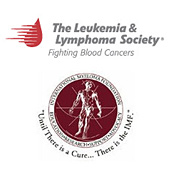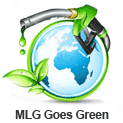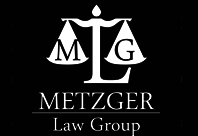

Safety-Kleen Litigation
About Safety-Kleen Corporation
Safety-Kleen 105 Solvent: Product or Hazardous Waste?
Benzene Contamination of Safety-Kleen 105 Solvent
Conscious Disregard of Mechanics’ Health and Safety
The Safety-Kleen 105 Recycling Process
Defective Design of Safety-Kleen Parts Washer Machines
Defective Design of Recycled Safety-Kleen 105 Solvent
Safety-Kleen’s Failure to Warn Mechanics of Toxic Hazards
Safety-Kleen’s Knowledge of Solvent-Induced Kidney Disease
Safety-Kleen Litigation
Safety-Kleen Corporation is the world’s largest recycler of automotive and industrial fluid wastes. Safety-Kleen offers a Parts Washer Service, Fluid Recovery Service, Oil Recovery Service, Paint Refinishing Service, Dry Cleaner Service, and Imaging Service.
The Parts Washer Service is the largest part of Safety-Kleen’s business. Safety-Kleen provides customers a parts washer machine, which it periodically fills with solvent, removing the used (“dirty”) solvent, which it recycles for further use. Safety-Kleen provides two basic types of parts washers and solvents to its customers: a mineral-spirits based solvent for degreasing parts, and an immersion cleaner for parts which require special cleaning.
The Safety-Kleen makes two types of parts washer machines: the “sink-on-a-drum” and tank models. The machines consist of a tank partially filled with Safety-Kleen 105 Solvent, a pump to pump solvent through a hose with a brush attached to it, and a sink in which the operator scrubs parts to degrease and clean them with the recycled solvent.
As a result of the ordinary use of the machine, workers inhale toxic vapors from solvent aerosols which form as the solvent flows through the hose into the air in an open system, and from vapors which form as volatile components evaporate in the air. Also as a result of the ordinary and intended use of the machine, solvent splashes onto the skin of workers operating the machine. The parts washer machines are commonly used in industry, often in conjunction with an air hose, which blow-dries parts which have been degreased in the machine. It has also been a customary practice in industry for workers to wash their hands using the parts washer machine.
Safety-Kleen 105 Solvent: Product or Hazardous Waste?
Unlike most petroleum products, Safety-Kleen 105 Solvent is not a refined petrochemical product but is rather hazardous waste; it is a recycled petroleum product contaminated with multiple carcinogens and other toxic chemicals not found in refined petroleum solvents.
The primary constituent of Safety-Kleen 105 Solvent is mineral spirits, which is a complex mixture of aromatic and aliphatic hydrocarbons obtained from the distillation of crude oil. To this, Safety-Kleen adds an antistatic agent and a green dye. The product is called “105 Solvent” because its flashpoint is supposedly 105° Fahrenheit, which would render it a combustible rather than a flammable material under various regulations.
Safety-Kleen 105 Solvent is contaminated with multiple carcinogenic chemicals, including benzene, perchloroethylene, trichloroethylene, methylene chloride, chlorinated benzenes, and polycyclic aromatic hydrocarbons.
Benzene Contamination of Safety-Kleen 105 Solvent
Benzene is a human carcinogen that causes leukemia and other cancers at concentrations as low as 0.1 part per million (ppm).
Benzene occurs naturally in crude oil and is therefore found in mineral spirits in varying amounts depending on the quality of the distillation process. Benzene has been detected in the virgin mineral spirits that Safety-Kleen purchases at concentrations from “nil” up to several hundred parts per million.
Benzene is also introduced into recycled Safety-Kleen 105 Solvent by Safety-Kleen’s automotive customers. For years, benzene has been used as an antiknock agent additive in gasoline. When automotive shops clean carburetors and other automobile parts using Safety-Kleen 105 Solvent benzene is introduced into the used solvent which is then recycled and delivered anew to customers.
The concentration of benzene in Safety-Kleen 105 Solvent varied widely by vendor, load, recycling facility, year, etc. Indeed, Safety-Kleen found benzene in the virgin mineral spirits it purchased at levels of several hundred ppm and recorded a benzene concentration in the spent solvent as high as 1380 ppm. According to a memorandum dated February 12, 1990 prepared by James Breece, Vice President of Technical, the benzene content varied significantly throughout the Safety-Kleen system, but was generally in the range of 2 to 70 ppm as of this date. However, in the same memo, Mr. Breece wrote that “the highest concentrations were found in recycled solvent from the Reedley Recycle Center.” It was this facility that recycled all the solvent used in California.
Conscious Disregard of Mechanics’ Health and Safety
In the early 1990s, Paul Dittmar, Safety-Kleen’s Product and Process Development Manager, was assigned the task of determining the extent of the solvent contamination problem and identifying remedial technologies. In a memo addressed to the company’s general counsel, Mr. Dittmar concluded that the solvent contamination problem was a major problem. He determined that a number of different technologies existed to resolve the problem, but that the best and simplest technology was fractional distillation — technology which has been used to refine crude oil since the turn of the century.
Mr. Dittmar determined that the use of such technology would totally eliminate benzene from the recycled product and reduce the chlorinated content of the solvent by 90%. Mr. Dittmar, who is not only a chemist but also holds a Masters Degree in Business Administration, then proceeded to determine the cost of implementing fractional distillation technology at Safety-Kleen’s domestic recycling centers. He determined that the cost of installation of the fractional distillation equipment would only be about $1 million for each of the company’s half-dozen recycling facilities and that the additional cost of processing the solvent would be about 2 to 4 cents per gallon.
Although Safety-Kleen was aware that its recycling process was defective and that it could be easily remedied for a capital expenditure of $1 million for each of its half-dozen recycling facilities (about ½ of one percent of its annual gross revenues) and a cost of about 3 cents per gallon (which could easily have been passed on to its customers), Safety-Kleen did not install fractional distillation equipment at its recycle centers. The result is that mechanics nationwide are exposed to toxic and dangerous levels of benzene, chlorinated solvents, and numerous other toxic chemicals in Safety-Kleen recycled solvents.
Defective Design of Safety-Kleen Parts Washer Machines
Safety-Kleen’s parts washer machines are defective in their design for at least three reasons:
First, the machines lacks a local exhaust ventilation device to remove toxic vapors from the solvent and prevent workers operating the machine from inhaling them. Such devices have long been used in industry and a ventilation device could, and should, have been designed as a standard part of the machine. Such a device would have substantially reduced operator exposure to toxic solvent vapors by inhalation, the primary exposure hazard to the solvent. Of course, a more sophisticated device such as a horizontal laminar airflow hood would have totally eliminated respiratory exposure to the solvent. Such devices have commonly been used in hazardous industrial applications since the early 1980s.
Second, the machines lack a barrier to prevent solvent from splashing onto machine operators. The ordinary operation of the machine as intended results in much splashing of solvent on operators’ arms, face, neck and upper torso. This exposure presents a substantial skin absorption hazard. A simple plastic barrier slightly above the lip of the sink on the front of the machine (with space below for the operator to insert his hands to degrease parts) could prevent the splashing of solvent on exposed areas of workers’ bodies. Of course, a more sophisticated device than a plastic barrier, such as a glove box, would have provided even greater dermal protection.
Third, the machines lack a cyclonic separator or other solvent-purifying device. A cyclonic separator is a device which filters solid particles out of contaminated solvent by means of centrifugal force, trapping the particles in a chamber for removal. The cyclonic separator reduces contamination of the solvent and customer exposure to certain toxins that contaminate the solvent. It also reduces odors and emissions of volatile organic compounds and even extends the useful life of the solvent. The cyclonic separator technology is hardly rocket science and its effectiveness has been proven. Indeed, Safety-Kleen provides the device to its customers in a similar “green” machine for use with a less toxic solvent.
The Safety-Kleen 105 Solvent Recycling Process
Safety-Kleen collects used Safety-Kleen 105 Solvent from its California customers and supplies them with recycled solvent. The used solvent is transported to the local service center, where it is put in a storage tank with used solvent from other customers. The solvent is then pumped into a tanker truck and shipped to Safety-Kleen’s recycle center in Reedley, California.
At the recycle center, the used solvent is pumped into a settling tank, where water, dirt and heavy oils settle to the bottom of the tank and are removed. The rest of the material is pumped into a crude evaporator. As the evaporator is heated in a vacuum, volatile chemicals evaporate, rise, and go into a condensation unit where they cool and re-condense. The first components to evaporate are low-boiling aromatics, including benzene. When benzene recondenses on the other side of the column it could be extracted from the solvent by various means, but Safety-Kleen does not extract benzene or any of the other toxic contaminants of the product. Safety-Kleen just continues heating the liquid in the evaporator until all the volatile components evaporate and recondense. The recondensed material, which is called recycled solvent (and improperly called “clean” solvent) is then delivered to customers. The process continues on and on in what has been described as a “closed-loop” system.
Due to the removal of water and sediment from the used solvent, toxic volatile organic compounds are more concentrated in the recycled solvent than in the used solvent. Additionally, high-boiling chlorinated solvents accumulate as they contaminate the product from further customer use. Thus, it is paradox that recycled (“clean”) Safety-Kleen solvent is actually more toxic than the used (“dirty”) solvent. Safety-Kleen’s recycling process creates this anomaly as the result of major design defects.
Regrettably, not all of the solvent or its carcinogenic contaminants remains in the “closed-loop” system. It is unfortunate that large amounts of the solvent and its carcinogenic components are inhaled into the lungs of operators of the parts washer machines and are absorbed through their skin into their bloodstream, causing internal organ diseases and cancers.
Defective Design of Recycled Safety-Kleen 105 Solvent
Recycled Safety-Kleen 105 Solvent is defective for at least two reasons:
First, it contains high levels of toxic and carcinogenic chlorinated solvents which do not exist in virgin mineral spirits. Indeed, toxic chlorinated compounds accumulate and concentrate in the solvent as these toxic chemicals are introduced into the solvent stream by automotive customers at a rate greater than they are removed by carry-off and evaporation.
Second, the benzene content of the recycled solvent is substantially greater than the benzene content of virgin mineral spirits, due to introduction of benzene-containing gasoline into the solvent by customers.
Safety-Kleen’s Failure to Warn Mechanics of Toxic Hazards
Notwithstanding Safety-Kleen’s knowledge of the cancer hazard presented by Safety-Kleen 105 Solvent, Safety-Kleen has never provided any warnings that exposure to its solvents can cause cancer. Rather than warning customers and their employees of these and many other toxic hazards, Safety-Kleen led customers and their employees to believe that the solvent was nontoxic and safe.
The form contract that Safety-Kleen used in dealings with its customers stated that Safety-Kleen 105 Solvent is “by definition, slightly toxic to relatively nontoxic.” This same language appears in the Operator’s Manual for the parts washer machine. The statement is more than inaccurate; it is misleading. Recycled hazardous waste that contains many carcinogens and other toxins and is classified by the U.S. EPA as “toxic” cannot, by definition, be “relatively nontoxic.” The statement was intended to assure customers and their employees that they could use the parts washer machine without harm.
The California Supreme Court has condemned statements regarding hazardous products which provide false assurances to users. In an early case, the Court said: “There is a particular need for a sufficient warning where, as here, there is a representation that the product is not dangerous.” Tingey v. E.F. Houghton & Co. (1947) 30 Cal.2d at 103.
The Court in Maize v. Atlantic Refining Co. (Pa. 1945) 41 A.2d 850, held that a product called “Safety-Kleen” was misleading, because these words “would naturally lull the user of that fluid so-named into a false sense of security” and the prominence of the word “Safety” would “exclude from [the user’s] mind that ‘provident fear’ which has been characterized as ‘the mother of safety.'”
Safety-Kleen’s Knowledge of Solvent-Induced Kidney Disease
Safety-Kleen has long known that its solvent is toxic to the kidneys. Allan Manteuffel, Safety-Kleen’s first Vice-President of Technical Services, wrote an article titled “Cleaning Parts: Why and How,” published in 1980 in Fleet Maintenance and Specifying. The article states: “Chlorinated solvents ought to be used only in washers designed specifically for them. In no case should they be used without adequate ventilation to remove the vapors from the surface of open-type cleaners at all times. When using these solvents, gloves should always be worn because of the possibility of the solvent contacting the skin. If the vapors are being inhaled or if the liquid is allowed to contact the skin continuously, the chemical can be absorbed into the body. Over a period of time, this can cause kidney, liver and/or lung damage.”
In May 1987, Safety-Kleen revised the label for its drop-off drums of Safety-Kleen 105 Solvent and warned that “long term overexposure may cause liver and/or kidney injury.” However, shortly thereafter, Safety-Kleen removed this warning because it was negatively affecting sales and profits.
Several cases of kidney cancer and disease have also been brought by workers exposed to Safety-Kleen 105 Solvent against the company. See, e.g., Diamond v. Safety-Kleen, Supreme Court of the State of New York (1991) [kidney cancer]; Minniear v. Safety-Kleen, U.S.D.C. N.D. Ind. (March 16, 1989) [kidney disease]; Wells v. Safety-Kleen, Superior Court of Washington for King County (Oct. 23, 1986) [kidney and liver disease]; Vineberg v. Safety-Kleen, Commonwealth of Massachusetts (1994) [kidney cancer].
The Metzger Law Group has litigated several cases of mechanics who were diagnosed with kidney disease and kidney cancer after many years of using Safety-Kleen solvents. If you are a mechanic who used Safety-Kleen parts washer machines and solvents and have developed kidney disease or kidney cancer, contact the Metzger Law Group for a free case evaluation and consultation. If your case cannot be brought in California, we will refer you to one or more qualified attorneys who are best able to litigate your case in your geographical area.
The Metzger Law Group has successfully litigated cases of about 35 mechanics who used Safety-Kleen parts washer machines, were exposed to Safety-Kleen solvents, and developed various blood diseases, kidney and liver disease, as well as blood cancers, and kidney cancer.
The firm is currently litigating the cases of another 30 mechanics who were exposed to Safety-Kleen solvents and developed blood diseases and cancers such as leukemia, lymphoma, multiple myeloma, and myelodysplastic syndrome.
The Metzger Law Group is currently only accepting Safety-Kleen cases for mechanics who were exposed to Safety-Kleen solvents in California. However, the Metzger Law Group is often asked to help attorneys nationwide who are representing mechanics who have become ill from using Safety-Kleen parts washer machines and solvents. To help all mechanics who become ill from Safety-Kleen solvents, the Metzger Law Group willingly provides consultation to attorneys nationwide who represent mechanics injured by Safety-Kleen solvents.
If you are a mechanic who was exposed to Safety-Kleen solvents from using Safety-Kleen parts washer machines and have become ill, contact the Metzger Law Group for a free case evaluation and consultation. If your case cannot be brought in California, we will refer you to one or more qualified attorneys who are best able to litigate your case in your geographical area.



